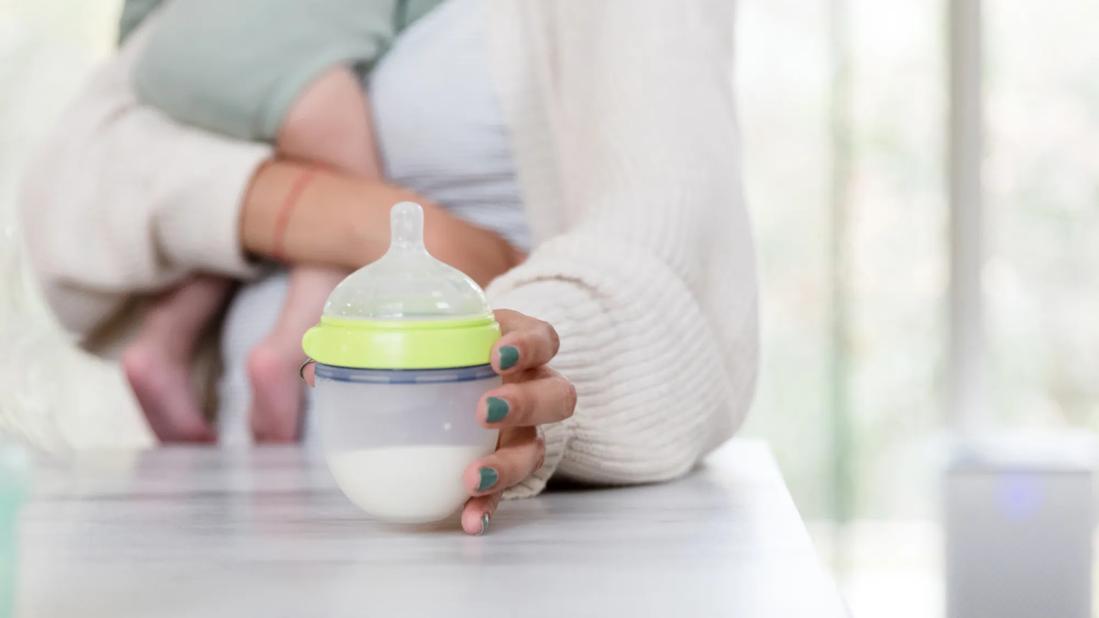Hand expression follows a specific rhythmic pattern to trigger a breast milk let-down

Sometimes, breastfeeding can be challenging, especially for first-time nursing parents. That’s where hand expression comes in handy.
Advertisement
Cleveland Clinic is a non-profit academic medical center. Advertising on our site helps support our mission. We do not endorse non-Cleveland Clinic products or services. Policy
Hand expression is a technique used to massage breast milk out of your breast and increase the flow of milk. Similar to using a pump or your baby’s mouth, hand expression is a helpful technique for an effective breastfeeding experience, as well as when you want to store milk between feedings.
Hand expression can take up to 15 to 30 minutes at a time, or until breast milk slows to a drip from one breast. When that happens, you can switch to your other breast and repeat the same process. Most often, shorter sessions can be more effective than longer ones. And the more you practice hand-expressing milk, the easier milk production becomes.
To help you get started, pediatrician and breastfeeding medicine specialist Heidi Szugye, DO, IBCLC, explains how to hand-express breast milk, as well as when you should — and shouldn’t — start the technique.
Hand-expressing milk is a skill that gets easier over time the more you practice these steps:
Advertisement
It takes time and practice to get this technique down. If it doesn’t work the first few rounds, try again after a small break. If you’re still having challenges, your Ob/Gyn or a lactation consultant can help walk you through the process or find alternative solutions.
Colostrum, the first milk produced by your breasts during pregnancy, is highly concentrated with nutrients and antibodies that strengthen your baby’s immune system and provide additional benefits. In some cases, you can hand express colostrum as early as 37 weeks of pregnancy if you’re at high risk for preterm birth, low milk supply or when certain health conditions are present.
If you’re interested in hand-expressing colostrum, talk to your healthcare provider first because hand-expressing before giving birth can sometimes lead to contractions and/or preterm labor.
“Storing colostrum before birth has not been shown in studies to make milk come in faster or prevent low supply long term,” shares Dr. Szugye. “It does get people comfortable with the skill of hand expression and potentially allows for giving their own breast milk if needed for supplementation early on. Those with risk factors for delay in milk coming in such as a C-section delivery or gestational diabetes may find it of benefit.”
Hand expression can be useful in a variety of scenarios, including:
Advertisement
Hand expression is different from breast massage because it’s designed to get the milk out of your breast. You should never aggressively massage your breasts with your hands or any other massage device. Instead, a very light-touch massage (like the pressure of petting a cat) might be recommended by your provider to aid in the drainage of swelling into the lymph nodes above your collarbone and in your armpits when your breasts are engorged or swollen. Light touch can also help you achieve a breast milk let-down.
Using a pump instead of hand-expressing or in combination with hand expression is most effective when you’re producing higher volumes of milk. Hand expression is often preferred over pumping preterm and soon after birth because colostrum tends to be thicker and richer, and because pumping increases your risk for inducing labor. Hand expression can also be done at different angles and in different rhythms to help improve milk flow, whereas pumping provides a consistent approach to the technique.
Hand-expressing milk between feedings — especially during peak times of the day when prolactin, the hormone that helps with milk production, is at its highest at night or early in the morning — can help make sure you have a bank of breast milk at your disposal.
Advertisement
Knowing how to store your breast milk is important information to have on hand, too. In most cases, breast milk can be stored:
Hand expression is a process that takes rhythm and dedication. Although there are recommendations for how long you should breastfeed, it doesn’t always work for everyone and that’s OK. If you have to supplement formula or donor milk for a time and try to relactate down the line, that’s always an option, too.
However you decide to nurse your child in the first few weeks of life and beyond, the important thing is making sure they get every ounce of nutrition they need to grow and thrive.
Advertisement
Learn more about our editorial process.
Advertisement

Look at weight gain, wet diapers, signs of dehydration and more

Yes, you can have honey if you’re breastfeeding — but never feed it directly to babies under 1

Intermittent fasting could impact your milk supply and energy levels, so it’s best to wait until you’ve weaned your baby from nursing

Ease into exercising, focus on sleep and follow a balanced diet — and be patient with yourself

If your baby has problems switching between breast and bottle, talk to your provider to get to the bottom of the confusion

It’s highly unlikely your baby will have an allergic reaction to food you eat while you’re breastfeeding

You may have a lower chance of getting pregnant while nursing — but it’s still possible

Staying on a pumping schedule, setting up a comfortable pumping space and having the right equipment can help

The best parenting style balances enforcing rules and showing plenty of love

Tips include cutting back on sugar, focusing on exercise and managing stress

It can be harder to let go when you’ve invested time, energy and emotions — but it might be the healthier choice long term